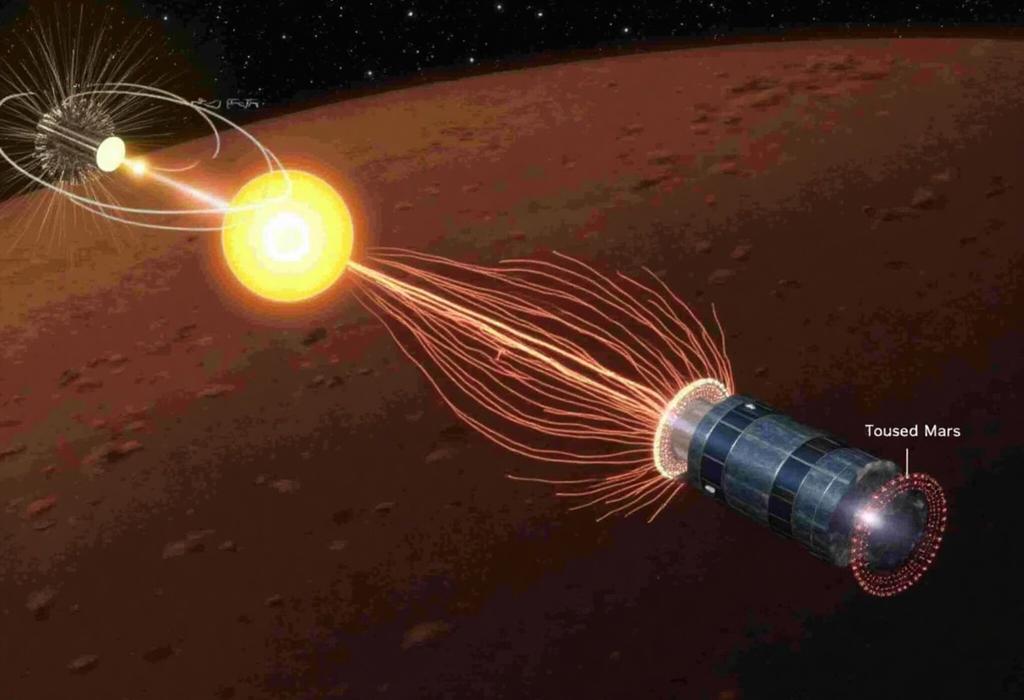NASA's MAVEN Mission Unveils Key Atmospheric Escape Process on Mars
In a groundbreaking development that could reshape our understanding of Mars' climate history, NASA's MAVEN (Mars Atmosphere Volatile Evolution) mission has reported a significant breakthrough in observing a process called sputtering. This phenomenon plays a pivotal role in the atmospheric escape of gases, which has long been linked to the loss of water on the Red Planet.
For years, scientists have confirmed the existence of liquid water on Mars billions of years ago, yet the question of its fate remains enigmatic. What happened to the water? This inquiry dates back to when Mars lost its magnetic field and was exposed to the relentless solar wind and solar storms, leading to the erosion of its once-thick atmosphere—a significant contributor to the planet's transition from a water-rich environment to the barren landscape we observe today.
Sputtering refers to the process by which energetic particles collide with the atmosphere, knocking out atoms and contributing to atmospheric loss. Shannon Curry, the principal investigator of MAVEN at the Laboratory for Atmospheric and Space Physics at the University of Colorado Boulder, offered a vivid analogy: "It’s like doing a cannonball in a pool. The cannonball, in this case, is the heavy ions crashing into the atmosphere really fast and splashing neutral atoms and molecules out." This analogy effectively captures the essence of how high-energy interactions can lead to atmospheric changes.
Previously, there were only indirect indicators of sputtering, based on observations of lighter and heavier isotopes of argon in Mars’ upper atmosphere. Researchers detected a concerning absence of lighter isotopes compared to heavier ones—an imbalance attributed solely to the sputtering process. As Curry metaphorically stated, "It is like we found the ashes from a campfire. But we wanted to see the actual fire, in this case sputtering, directly." This direct observation marks a monumental achievement in planetary science.
To successfully observe sputtering, the MAVEN team undertook the complex task of gathering simultaneous measurements from three of its onboard instruments: the Solar Wind Ion Analyzer, the Magnetometer, and the Neutral Gas and Ion Mass Spectrometer. The necessity for precise data collected at the right time and location over an extended period underlines the mission's complexity and the scientific rigor involved.
The results led to the creation of a detailed map illustrating the distribution of sputtered argon in correlation with solar wind activity. Notably, the findings revealed that sputtering occurs at a rate four times higher than previously anticipated, with elevated rates during solar storms, further contributing to our understanding of how Mars lost its atmosphere.
Curry noted, "These results establish sputtering’s role in the loss of Mars’ atmosphere and in determining the history of water on Mars." The implications of this discovery are profound, shedding light on how conditions once allowed for liquid water to persist on Mars, raising intriguing questions about the planet's potential habitability billions of years ago.
Published recently in Science Advances, this study is set to significantly enhance our comprehension of Martian atmospheric dynamics and their impact on Earth's neighboring planet's evolutionary journey. The MAVEN mission stands as a cornerstone of NASA’s Mars Exploration Program, with contributions from a robust team across various institutions, including Lockheed Martin Space, which built the spacecraft, and NASA’s Jet Propulsion Laboratory, providing navigation support.
Bias Analysis
Key Questions About This Article




